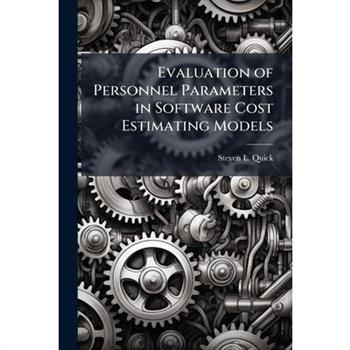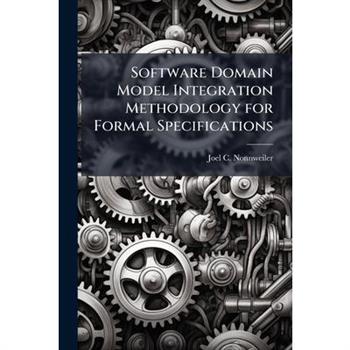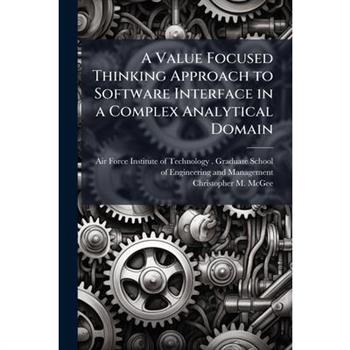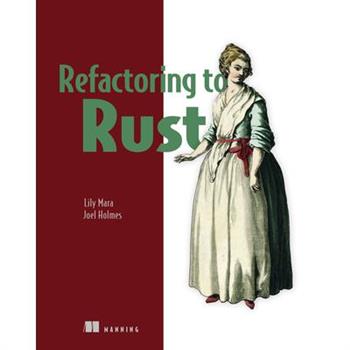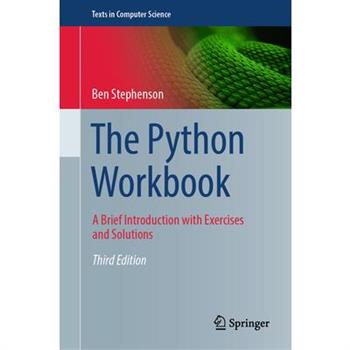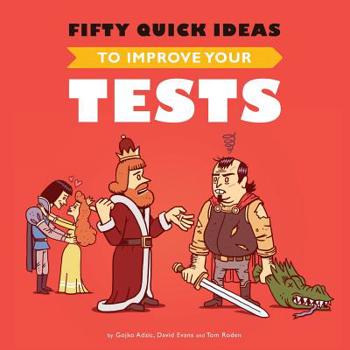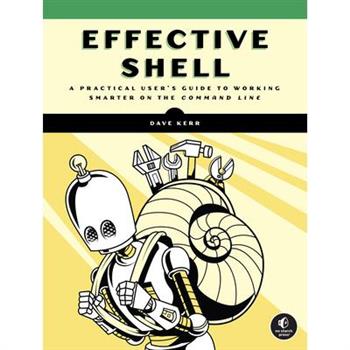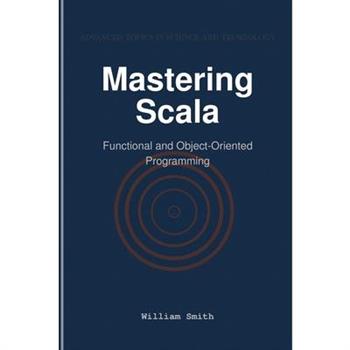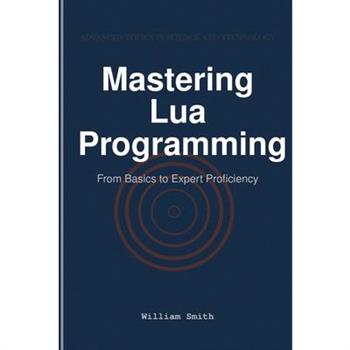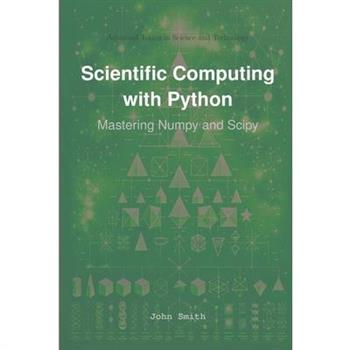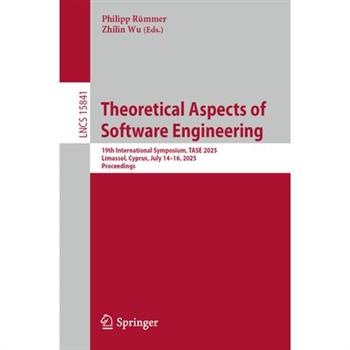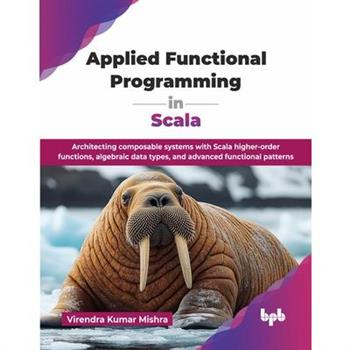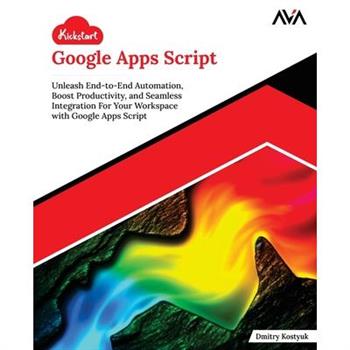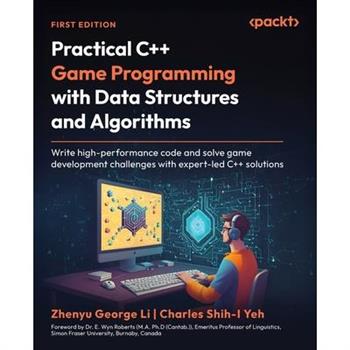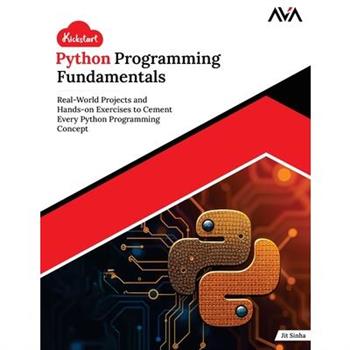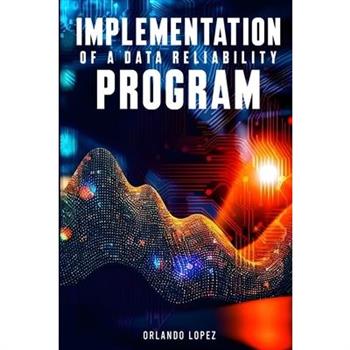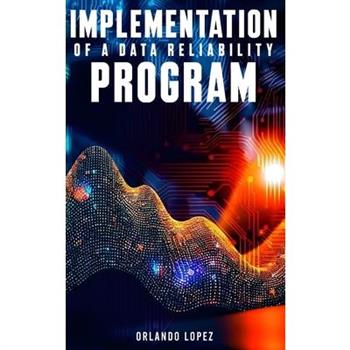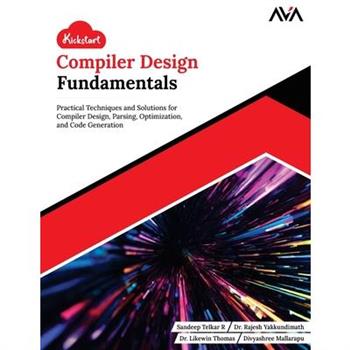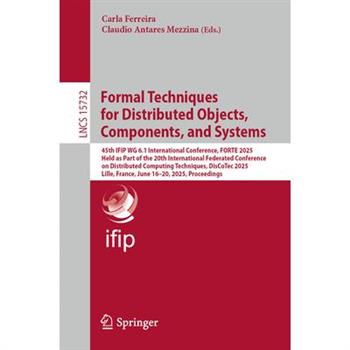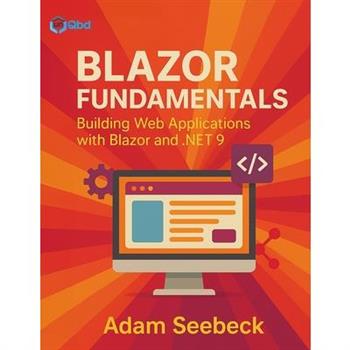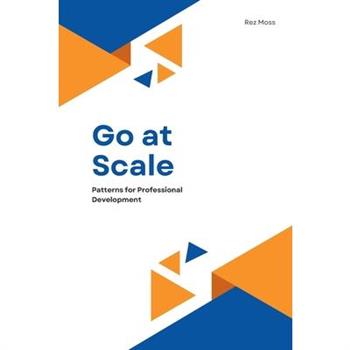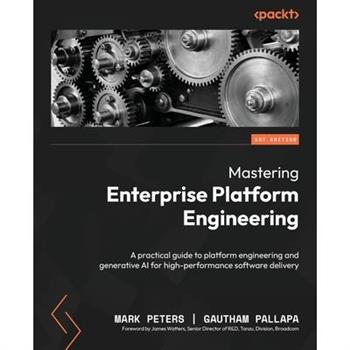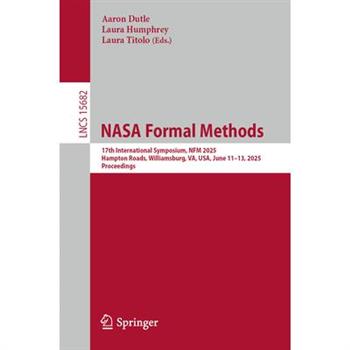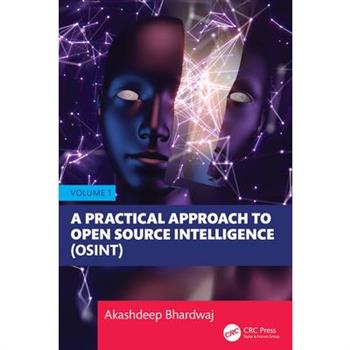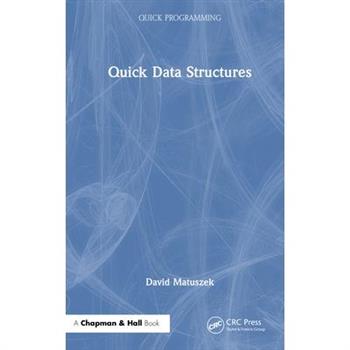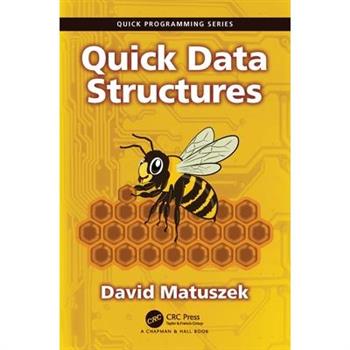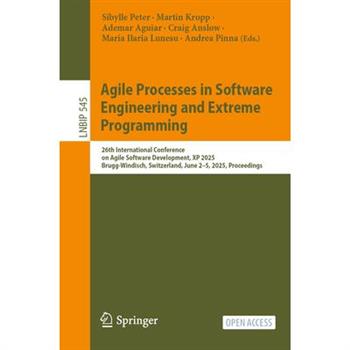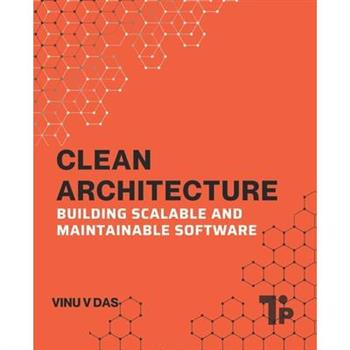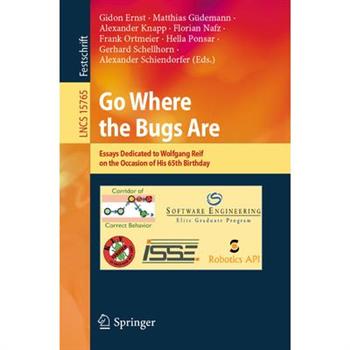Generating Test Templates via Automated Theorem Proving
Testing can be used during the software development process to maintain fidelity between evolving specifications, program designs, and code implementations. We use a form of specification-based testing that employs the use of an automated theorem prover to generate test templates. A similar approach was developed using a model checker on state-intensive systems. This method applies to systems with functional rather than state-based behaviors. This approach allows for the use of incomplete specifications to aid in generation of tests for potential failure cases. We illustrate the technique on the cannonical triangle testing problem and discuss its use on analysis of a spacecraft scheduling system.This work has been selected by scholars as being culturally important, and is part of the knowledge base of civilization as we know it. This work was reproduced from the original artifact, and remains as true to the original work as possible. Therefore, you will see the original copyright references, library stamps (as most of these works have been housed in our most important libraries around the world), and other notations in the work.This work is in the public domain in the United States of America, and possibly other nations. Within the United States, you may freely copy and distribute this work, as no entity (individual or corporate) has a copyright on the body of the work.As a reproduction of a historical artifact, this work may contain missing or blurred pages, poor pictures, errant marks, etc. Scholars believe, and we concur, that this work is important enough to be preserved, reproduced, and made generally available to the public. We appreciate your support of the preservation process, and thank you for being an important part of keeping this knowledge alive and relevant.
Evaluation of Personnel Parameters in Software Cost Estimating Models
Software capabilities have steadily increased over the last half century. The Department of Defense has seized this increased capability and used it to advance the warfighter's weapon systems. However, this dependence on software capabilities has come with enormous cost. The risks of software development must be understood to develop an accurate cost estimate. Department of Defense cost estimators traditionally depend on parametric models to develop an estimate for a software development project. Many commercial parametric software cost estimating models exist such as COCOMO II, SEER-SEM, SLIM, and PRICE S. COCOMO II is the only model that has open architecture. The open architecture allows the estimator to fully understand the impact each parameter has on the effort estimate in contrast with the closed architecture models that mask the quantitative value with a qualitative input to characterize the impact of the parameter.This work has been selected by scholars as being culturally important, and is part of the knowledge base of civilization as we know it. This work was reproduced from the original artifact, and remains as true to the original work as possible. Therefore, you will see the original copyright references, library stamps (as most of these works have been housed in our most important libraries around the world), and other notations in the work.This work is in the public domain in the United States of America, and possibly other nations. Within the United States, you may freely copy and distribute this work, as no entity (individual or corporate) has a copyright on the body of the work.As a reproduction of a historical artifact, this work may contain missing or blurred pages, poor pictures, errant marks, etc. Scholars believe, and we concur, that this work is important enough to be preserved, reproduced, and made generally available to the public. We appreciate your support of the preservation process, and thank you for being an important part of keeping this knowledge alive and relevant.
Software Domain Model Integration Methodology for Formal Specifications
Using formal methods to create automatic code generation systems is one of the goals of Knowledge Based Software Engineering (KBSE) groups. The research of the Air Force Institute of Technology KBSE group has focused on the utilization of formal languages to represent domain model knowledge within this process. The code generation process centers around correctness preserving transformations that convert domain models from their analysis representations through design to the resulting implementation code. The diversity of the software systems that can be developed in this manner is limited only by the availability of suitable domain models. Therefore it should be possible to combine existing domain models when no single model is able to completely satisfy the requirements by itself. This work proposes a methodology that can be used to integrate domain models represented by formal languages. The integration ensures that the correctness of each input model is maintained while adding the desired functionality to the integrated model. Further, because of the inherent knowledge captured in the domain models, automated tool support can be developed to assist the application engineer in this process.This work has been selected by scholars as being culturally important, and is part of the knowledge base of civilization as we know it. This work was reproduced from the original artifact, and remains as true to the original work as possible. Therefore, you will see the original copyright references, library stamps (as most of these works have been housed in our most important libraries around the world), and other notations in the work.This work is in the public domain in the United States of America, and possibly other nations. Within the United States, you may freely copy and distribute this work, as no entity (individual or corporate) has a copyright on the body of the work.As a reproduction of a historical artifact, this work may contain missing or blurred pages, poor pictures, errant marks, etc. Scholars believe, and we concur, that this work is important enough to be preserved, reproduced, and made generally available to the public. We appreciate your support of the preservation process, and thank you for being an important part of keeping this knowledge alive and relevant.
A Value Focused Thinking Approach to Software Interface in a Complex Analytical Domain
The intelligence community is faced with an extensive amount of data. Software programs are being developed to examine this issue of data overload and to develop solutions. The responsibility of making the final software decision lies on the analyst, therefore, the interface is the key to linking the intelligence data to the processing and results. If the interface is difficult and complex, the software will be less likely to be used. A methodology must be created which can objectively evaluate the effectiveness of the interface. This methodology will also measure the improvements in the interface's effectiveness that result when various changes are made to the original software interface. Value focused thinking (VFT) is a proven methodology that can be applied to this problem. VFT provides an objective methodology to identify the values of an organization. Its hierarchical structure is well suited for handling multi-objective problems, such as identifying the values of software interfaces. The values can be measured and put to a common scale, allowing their contribution to the overall objective to be evaluated. By assigning quantifiable measurements to the components, the multiobjective goal can be evaluated and insight can be provided to the decision makers involved with the intelligence software. VFT was applied to determine what is valued in software's interface to members of the intelligence community. With these values identified, a software that is under development was evaluated against the hierarchy. This provided insight into where improvements could be made to the interface that would provide the greatest benefit. The VFT process also allows for the decision maker to continually reevaluate the software against the hierarchy, enabling continual improvement on the interface while maintaining the values of the intelligence community.This work has been selected by scholars as being culturally important, and is part of the knowledge base of civilization as we know it. This work was reproduced from the original artifact, and remains as true to the original work as possible. Therefore, you will see the original copyright references, library stamps (as most of these works have been housed in our most important libraries around the world), and other notations in the work.This work is in the public domain in the United States of America, and possibly other nations. Within the United States, you may freely copy and distribute this work, as no entity (individual or corporate) has a copyright on the body of the work.As a reproduction of a historical artifact, this work may contain missing or blurred pages, poor pictures, errant marks, etc. Scholars believe, and we concur, that this work is important enough to be preserved, reproduced, and made generally available to the public. We appreciate your support of the preservation process, and thank you for being an important part of keeping this knowledge alive and relevant.
Selecting a Software Engineering Methodology Using Multiobjective Decision Analysis
With the emergence of agent-oriented software engineering methodologies, software developers have a new set of tools to solve complex software requirements. One problem software developers face is to determine which methodology is the best approach to take to developing a solution. A number of factors go into the decision process. This thesis defines a decision making process that can be used by a software engineer to determine whether or not a software engineering approach is an appropriate system development strategy. This decision analysis process allows the software engineer to classify and evaluate a set of methodologies while specifically considering the software requirement at hand. The decision-making process is developed on a multi-objective decision analysis technique. This type of technique is necessary as there are a number of different, and sometimes conflicting, criterions. The set of criteria used to base the decision was derived from literature sources and validated by an opinion survey conducted to members of the software engineering community. After developing the decision making framework, a number of case studies are examined.This work has been selected by scholars as being culturally important, and is part of the knowledge base of civilization as we know it. This work was reproduced from the original artifact, and remains as true to the original work as possible. Therefore, you will see the original copyright references, library stamps (as most of these works have been housed in our most important libraries around the world), and other notations in the work.This work is in the public domain in the United States of America, and possibly other nations. Within the United States, you may freely copy and distribute this work, as no entity (individual or corporate) has a copyright on the body of the work.As a reproduction of a historical artifact, this work may contain missing or blurred pages, poor pictures, errant marks, etc. Scholars believe, and we concur, that this work is important enough to be preserved, reproduced, and made generally available to the public. We appreciate your support of the preservation process, and thank you for being an important part of keeping this knowledge alive and relevant.
Beyond Code
This book investigates how tools such as Cursor AI, GitHub Copilot, and Replit's Ghostwriter are dismantling traditional barriers to entry for learners-particularly those from non-STEM backgrounds-by enabling natural language code generation, intelligent debugging, and interactive, project-based learning.
Refactoring to Rust
Don't rewrite from scratch! Improve your software speed and scalability by iteratively replacing performance-critical code with Rust Refactoring to Rust helps you get the speed and reliability of Rust libraries, functions, and high-performance features without needing a complete rewrite of your codebase. In Refactoring to Rust you will learn to: - Create Rust libraries you can call from other programming languages - Integrate Rust functions with code in other languages - Use Rust's ownership and borrowing system to write high performance code - Handle errors as values using Rust's enums - Minimize unnecessary memory usage with Rust's multiple string types - Boost performance with Rust concurrency and async event processing - Create Rust HTTP services Rust is designed to gradually replace other languages by integrating and decomposing existing code. Refactoring to Rust helps you take full advantage of this amazing feature, even if you've never coded in Rust before. You'll learn practical code-mixing techniques like embedding Rust libraries into apps written in other languages. About the technology Upgrade your software without starting from scratch! By incrementally introducing Rust into your codebase, you can upgrade key features and improve the performance of almost any application. This book shows you how to create standalone Rust libraries, boost speed and stability by using Rust for concurrency, and create safe, memory-efficient low-level code. About the book Refactoring to Rust shows you exactly where and how to integrate Rust surgically into applications written in another language. You'll start by reviewing Rust's unique syntax and concepts, with special emphasis on unique language features like variable lifetime and ownership. Then, you'll learn to use Rust to wrap dangerous code, call standard and custom Rust libraries, and even use WASM to run Rust in the browser. What's inside - Create Rust libraries you can call from other languages - Handle errors as values using Rust's enums - Optimize for memory efficiency - Boost performance with Rust concurrency About the reader For intermediate programmers. No Rust experience required. About the author Lily Mara is a software engineer focused on high-performance Rust applications. Joel Holmes is a software developer building cloud native applications. He is the Author of Shipping Go, and Co-Author of Go in Action, Second Edition. Table of Contents 1 Why refactor to Rust 2 An overview of Rust 3 Introduction to C FFI and unsafe Rust 4 Advanced FFI 5 Structuring Rust libraries 6 Integrating with dynamic languages 7 Testing your Rust integrations 8 Asynchronous Python with Rust 9 WebAssembly for refactoring JavaScript 10 WebAssembly interface for refactoring Get a free eBook (PDF or ePub) from Manning as well as access to the online liveBook format (and its AI assistant that will answer your questions in any language) when you purchase the print book.
The Python Workbook
Presents numerous exercises, many of which with complete solutionsSupports the solutions with additional notes that explain the technique used and highlight specific points of Python syntaxIncludes a mixture of classic computer science exercises and exercises that make connections to other disciplines
Fifty Quick Ideas To Improve Your Tests
This book is for cross-functional teams working in an iterative delivery environment, planning with user stories and testing frequently changing software under tough time pressure. This book will help you test your software better, easier and faster. Many of these ideas also help teams engage their business stakeholders better in defining key expectations and improve the quality of their software products.
Cloud Application Architecture Patterns
Cloud computing has become the foundation of modern software delivery, powering everything from agile startups to global enterprises. As businesses race to modernize, understanding how to design cloud-native applications that scale, recover, and evolve has never been more essential. This book steps in as your go-to guide for navigating the architectural challenges of today's dynamic cloud landscape.This book systematically covers cloud evolution, from traditional IT to IaaS, PaaS, and SaaS, including deployment models and data concepts. You will master fundamental principles like scalability and resource pooling, then explore service models in depth with migration case studies. Chapters detail practical scalability patterns (load balancing, auto-scaling, partitioning) and resiliency patterns (health monitoring, circuit breakers). Essential data management and crucial security patterns (identity, encryption, compliance) are covered. Finally, you will learn advanced messaging and integration patterns, robust monitoring and observability patterns vital for DevOps, and explore future trends like serverless, edge, and AI integration.By the end, you will possess comprehensive knowledge and practical understanding of cloud application design, ready to confidently architect, deploy, and manage effective, secure cloud solutions.WHAT YOU WILL LEARN● Design scalable, cloud-native applications with proven architecture patterns.● Apply resiliency strategies like failover and graceful degradation.● Understand deployment models and pick the right one for your needs.● Architect secure systems with encryption and API security.● Implement observability with metrics, traces, and logging.● Navigate hybrid integrations using event-driven and messaging patterns.● Stay ahead with trends like serverless and sustainable cloud designs.WHO THIS BOOK IS FORThis book is ideal for cloud architects, software engineers, DevOps professionals, enterprise tech leads, and computer science students. Readers should possess a foundational understanding of programming concepts and basic IT infrastructure to best leverage this guide's architectural insights.
Effective Shell
Master the tools. Build the workflow. Own the shell. Effective Shell is the hands-on guide for developers who want to master the command line--not just to get around, but to build a fast, flexible, and portable development environment. This isn't a tour of shell commands. It's a blueprint for creating workflows that scale across machines, teams, and projects. You'll go from keystroke-level efficiency to composing powerful pipelines, writing reliable scripts, and automating common development tasks. Then you'll take it further: managing your configuration with Git, customizing your shell setup, and working seamlessly across remote sessions using tools like Vim and tmux. By the end, your shell won't just be a tool; it'll be an extension of your thinking. You'll learn how to: Find, filter, and reshape data using grep, regular expressions, and shell pipelinesWrite scripts that automate setup, configuration, and repetitive tasksCreate Python-based CLI tools to pull and process structured dataManage your environment with Git and version-controlled dot filesEdit quickly with Vim and multitask efficiently using terminal multiplexersUse AI tools to generate commands, debug faster, and enhance automationRather than prescribing a one-size-fits-all toolkit, Effective Shell teaches you the tools, practices, and strategies to build a shell environment that fits the way you work--efficient, portable, and entirely yours. Whether you're leveling up from the basics or refining your craft, this book will help you think clearly, automate confidently, and work more effectively in the shell.
Quantum Computing
Quantum Computing: Principles and Paradigms covers a broad range of topics, providing a state-of-the-art and comprehensive reference for the rapid progress in the field of quantum computing and related technologies from major international companies (such as IBM, Google, Intel, Rigetti, Q-Control) and academic researchers. This book appeals to a broad readership, as it covers comprehensive topics in the field of quantum computing, including hardware, software, algorithms, and applications, with chapters written by both academic researchers and industry developers. This book presents readers with the fundamental concepts of quantum computing research, along with the challenges involved in developing practical devices and applications.
Object-Based Programming with Go
This textbook explains the concept of "object-based programming" as an essential part of "object orientation" and elucidates why the programming language Go, developed at Google, optimally supports this concept. Using significant parts of the micro-universe, a large collection of software components (with source code totaling nearly 64,000 lines), many important data types and their algorithms are described. In the practical section, various programs constructed according to this concept are presented. The translation was done with the help of artificial intelligence. A subsequent human revision was done primarily in terms of content.
Mastering Scala
"Mastering Scala: Functional and Object-Oriented Programming" is an essential guide for anyone looking to delve into the powerful world of Scala. This book provides a comprehensive introduction to the language, blending both functional and object-oriented paradigms to equip readers with versatile and robust programming skills. Designed for both beginners and experienced developers, it covers everything from basic syntax and foundational principles to advanced topics such as concurrency, data processing, and working with external libraries. Each chapter is meticulously structured to ensure a gradual and thorough understanding of complex concepts, making Scala both accessible and engaging. Discover the elegance and efficiency of Scala through detailed explanations and practical examples, fostering a deep understanding of the language's core features. With a focus on real-world applications, this book showcases Scala's capabilities in tackling modern software development challenges. Whether you're transitioning from another programming language or starting your coding journey, "Mastering Scala" is your definitive resource for mastering one of today's most influential programming languages.
Mastering Lua Programming
"Mastering Lua Programming: From Basics to Expert Proficiency" is a comprehensive guide designed to lead you through the nuances of Lua, from fundamental concepts to advanced techniques. This book covers essential topics such as variables, data types, operators, and control structures, providing a solid foundation for any aspiring Lua developer. With a meticulous approach, it delves into functions, tables, and metatables, enabling you to write efficient and maintainable code. In addition to fundamental programming principles, this book explores error handling, debugging, file I/O, and data handling, ensuring that you are well-equipped to build robust applications. Further, it addresses modules, packages, and concurrency with coroutines, presenting best practices and advanced techniques. Whether you're a beginner seeking a structured introduction or an experienced programmer aiming to deepen your knowledge, this book is an indispensable resource for mastering Lua programming.
Scientific Computing with Python
"Scientific Computing with Python: Mastering Numpy and Scipy" is a comprehensive guide designed to equip readers with the knowledge and skills necessary for efficient numerical computations and data analysis. Whether you're a beginner or an advanced user, this book delves into essential topics such as array manipulation, advanced Numpy techniques, and the vast functionalities of Scipy, including optimization, linear algebra, signal processing, and statistical analysis. Each chapter builds on the previous one, offering detailed explanations, practical examples, and best practices. With an emphasis on real-world applications and case studies, this book is an invaluable resource for researchers, engineers, data scientists, and educators aiming to excel in the field of scientific computing. Discover the power of Python's robust libraries and elevate your computational skills to solve complex scientific problems.
Algorithms and Data Structures
Master the fundamental principles that govern modern computer science. This comprehensive guide provides a step-by-step approach to designing, analyzing, and implementing efficient algorithms. In it you will discover: -Clear explanations of key algorithms and data structures. -Practical techniques for optimizing runtime and memory usage. -Practical examples and exercises to reinforce your understanding. -A solid foundation for tackling complex programming tasks. -Perfect for students, programmers, and computer scientists who want to improve their problem-solving skills and create powerful applications.
Theoretical Aspects of Software Engineering
This book constitutes the refereed proceedings of the 19th International Symposium on Theoretical Aspects of Software Engineering, TASE 2025, held in Limassol, Cyprus, during July 14-16, 2025.The 20 full papers, 1 short paper, 2 invited papers were carefully selected from 66 submissions.The papers present the latest developments in formal and theoretical software engineering methods and techniques.They are grouped in topical sections on program verification; verification and concurrency; SAT and SMT solving; trustworthy AI and system software; program analysis using machine learning; security; and dynamic analysis.
Applied Functional Programming in Scala
Functional programming is transforming how we build robust, scalable, and maintainable software by prioritizing clarity and predictability. It emphasizes what to compute by defining expressions that map values to other values, and focuses on how to achieve a result through a sequence of statements that change program state.This book explores core functional principles like immutability, pure functions, and referential transparency. You will gain a deep understanding of the mathematical underpinnings through category theory concepts like Functors and Monads, and then apply these practically using Scala functional features and leading libraries such as Cats and ZIO. The book also covers handling effects and I/O, advanced functional patterns, and using specialized tools to build functional web, database, and streaming solutions. With real examples and patterns, it shows how these ideas can simplify code, improve testability, and increase system resilience.By the end of this book, you will have a theoretical understanding and practical proficiency in building high-quality, maintainable applications using functional programming in Scala.WHAT YOU WILL LEARN● Implement Scala higher-order functions, currying, and Option/Either.● Understand Functors, Monads, and their category theory relevance.● Utilize Cats type classes for extensible functional programming.● Build scalable applications using FP patterns.● Manage side-effects and I/O functionally using effect systems.● Real-world use of functional programming.WHO THIS BOOK IS FORThis book is for software engineers, developers, and architects seeking to write more composable, testable, and expressive code. Readers should have a basic understanding of programming concepts, but no prior functional language experience is required.
The Elusive Silver Lining
"The Elusive Silver Lining: How We Fail to Learn From Failure in Software Development" examines the pervasive challenges in software development projects. It delves into why organizations often struggle to extract valuable lessons from past failures. By analyzing the dynamics of project management, risk assessment, and team collaboration, this book provides insights into the systemic issues that hinder learning and improvement. It's a crucial resource for project managers, software engineers, and business leaders seeking to enhance project outcomes and foster a culture of continuous learning within their organizations. Understanding why failures occur and how to mitigate them is essential for success in the ever-evolving landscape of software development.This work has been selected by scholars as being culturally important, and is part of the knowledge base of civilization as we know it. This work was reproduced from the original artifact, and remains as true to the original work as possible. Therefore, you will see the original copyright references, library stamps (as most of these works have been housed in our most important libraries around the world), and other notations in the work.This work is in the public domain in the United States of America, and possibly other nations. Within the United States, you may freely copy and distribute this work, as no entity (individual or corporate) has a copyright on the body of the work.As a reproduction of a historical artifact, this work may contain missing or blurred pages, poor pictures, errant marks, etc. Scholars believe, and we concur, that this work is important enough to be preserved, reproduced, and made generally available to the public. We appreciate your support of the preservation process, and thank you for being an important part of keeping this knowledge alive and relevant.
Online Algorithms for Finger Searching
This technical work delves into the design and analysis of online algorithms specifically tailored for finger searching. It presents theoretical frameworks and innovative approaches for efficiently locating data within ordered sets using 'finger' pointers. Ideal for computer scientists, mathematicians, and researchers interested in advanced data structures and algorithms.This work has been selected by scholars as being culturally important, and is part of the knowledge base of civilization as we know it. This work was reproduced from the original artifact, and remains as true to the original work as possible. Therefore, you will see the original copyright references, library stamps (as most of these works have been housed in our most important libraries around the world), and other notations in the work.This work is in the public domain in the United States of America, and possibly other nations. Within the United States, you may freely copy and distribute this work, as no entity (individual or corporate) has a copyright on the body of the work.As a reproduction of a historical artifact, this work may contain missing or blurred pages, poor pictures, errant marks, etc. Scholars believe, and we concur, that this work is important enough to be preserved, reproduced, and made generally available to the public. We appreciate your support of the preservation process, and thank you for being an important part of keeping this knowledge alive and relevant.
illLogical Thinking in C++ and C++17 Advanced
This book is designed to explain C++ and its Object-Oriented Programming (OOP) philosophy. It then progresses to cover C++11 features and gradually moves toward the specifications of C++17. The content is thoughtfully written to clearly explain the syntax, along with real-time examples used in the industry.This book will surely add value to your knowledge and skills.As the author, I highly recommend that you read it-it won't disappoint you. And please don't forget to share your feedback on online platforms. Your feedback is valuable to me as it helps me better understand how my book is being received.
Practical C++ Game Programming with Data Structures and Algorithms
Explore expert techniques in C++ to tackle performance bottlenecks, AI logic, and rendering issues for smoother, smarter, and scalable game developmentKey Features: - Solve real-world game dev problems with expert C++ data structures and algorithms- Learn through practical, executable code instead of abstract theory or pseudocode- Build responsive, high-performance games with advanced rendering and AI techniques- Print or Kindle purchase includes a free PDF eBookBook Description: Game development demands performance-driven solutions-from rendering complex 3D scenes to managing AI behavior and handling animations. This hands-on book guides you in solving these challenges using high-performance C++ data structures and algorithms. The authors distill their decades of combined industry experience to help you apply practical C++ techniques to create smooth, scalable, and intelligent games. Instead of pseudocode or abstract theory, you'll work with real, executable examples that translate directly to your projects. Demos in this book have been developed based on raylib library, providing accessible and efficient foundations for learning.Opening with a structured overview of algorithmic thinking in C++ game development, the book covers advanced algorithms and their applications in real-world game scenarios. You'll implement data structures that optimize game functionality, solve algorithmic problems efficiently, and enhance gameplay with robust AI and rendering techniques. In addition, the key focus is collision detection, 2D/3D rendering, animation, camera controls, and machine learning-driven AI, all through practical, executable C++ code.By the end of this book, you'll be able to confidently apply advanced C++ techniques to develop efficient, scalable, and feature-rich gameplay systems for modern games.What You Will Learn: - Apply data structures and algorithms to solve real game development problems- Apply rendering techniques, such as shader, lighting, soft shadow, particles, and quad-tree terrain- Build dynamic camera systems like third-person, rail, top-down, and split-screen views- Animate skeletal characters using interpolation and inverse kinematics- Implement NPC AI with FSM, behavior tree, A* pathfinding, and steering- Explore ML with neural networks in a hands-on AI turret defense project- Performance and memory optimization using techniques like object pooling and LODWho this book is for: This book is for experienced game programmers, technical artists, and developers looking to refine their skills through real-world C++ solutions. A foundational understanding of C++, data structures, and core game development principles will be beneficial. Whether you want to deepen your expertise or are looking for a reliable reference guide, this book will be your trusted companion in building better games.Table of Contents- Gearing Up: C++ for Game Development- Data Structures in Action: Building Game Functionality- Algorithms Commonly Utilized in Game Development- 2D Rendering and Effects- The Camera and Camera Controls- 3D Graphics Rendering- Rendering a 3D Game World- Animating Your Characters- Building AI Opponents - Machine Learning Algorithms for Game AI- Continuing Your Learning Journey
Python Fast Track
Python Fast Track: A Complete Guide to Rapidly Mastering and Applying Python Programming adopts a simplified writing style and provides clear explanations to ensure ease of understanding, making it an ideal resource for those new to Python. Starting with the basics, the book covers fundamental concepts such as variables, data types, printing and prompting, lists, dictionaries, tuples, control structure, functions, and object-oriented concepts. The book includes everything you need to understand and apply more advanced programming techniques such as file handling, exception handling, and regex. This great resource is created especially for those who want to apply Python for their research and professional work in scientific computing, data analysis and machine learning, including chapters on NumPy and Pandas, two of the most popular Python application libraries. It demonstrates how to effectively master key applications of Python such as web development, software creation, task automation, and data analysis. The book covers data analysis and machine learning tasks that greatly benefit from Python, thanks to libraries such as TensorFlow and Keras that enable efficient coding.
Simple Electronics with Gpio Zero
There are many things that distinguish Raspberry Pi from other computers. The GPIO header might just be the most significant of them all -- it allows you to connect electronic components to your Raspberry Pi and control them with code you've written yourself.The most popular programming language for controlling electronics on a Raspberry Pi is Python, particularly the code in the GPIO Zero library, which you can use to control LEDs, sensors, motors, and many more components.With this book, you'll learn how to use GPIO Zero as you build a series of simple electronics projects: Program some LED lightsAdd a push button to your projectBuild a motion-sensing alarmCreate your own distance rangefinderMake a laser-powered tripwireBuild a Raspberry Pi robotThe GPIO pins on your Raspberry Pi open up a whole new world of possibilities -- specifically, the physical world around you. It may seem daunting at first, but you'll be creating electronic circuits and controlling them with code before you know it. Grab your breadboard and start taking control of the real world with your Raspberry Pi today!Updated for the latest Raspberry Pi devices, this book has all the information you need to get started.
Implementation of a Data Reliability Program
Ensuring the accuracy, completeness, and accessibility of data is paramount in today's data-driven landscape. This book is a comprehensive guide that aids readers in effectively managing data and e-records' reliability vulnerabilities while maintaining crucial compliance standards.The data reliability program applies to various industries. However, the author uses the medicinal products manufacturing sector as a prime example. In this industry, the reliability of recorded information is fundamental for guaranteeing product quality and safety, emphasizing the importance of data suitability, risk-assessed controls, and proper data management.The author explores pertinent regulations and guidance specific to medicinal product manufacturing, offering valuable insights for readers. By aligning with industry standards, this program equips professionals with the necessary tools to navigate and optimize data reliability practices.
Implementation of a Data Reliability Program
Ensuring the accuracy, completeness, and accessibility of data is paramount in today's data-driven landscape. This book is a comprehensive guide that aids readers in effectively managing data and e-records' reliability vulnerabilities while maintaining crucial compliance standards.The data reliability program applies to various industries. However, the author uses the medicinal products manufacturing sector as a prime example. In this industry, the reliability of recorded information is fundamental for guaranteeing product quality and safety, emphasizing the importance of data suitability, risk-assessed controls, and proper data management.The author explores pertinent regulations and guidance specific to medicinal product manufacturing, offering valuable insights for readers. By aligning with industry standards, this program equips professionals with the necessary tools to navigate and optimize data reliability practices.
Coordination Models and Languages
This book constitutes the refereed proceedings of the 27th IFIP WG 6.1 International Conference on Coordination Models and Languages, COORDINATION 2025, held in Lille, France, during June 17-19, 2025, as part of the 20th International Federated Conference on Distributed Computing Techniques, DisCoTec 2025. The 12 full papers and two invited contributions included in this book were carefully reviewed and selected from 29 submissions. This conference provides a well-established forum for the community of researchers interested in models, languages, architectures, and implementation techniques for coordination.
Practical SharePoint Framework (SPFx) Development
Unlock the full potential of the SharePoint Framework with expert-led guidance, practical use cases, and insider tips to build high-quality business solutions beyond what official documentation offersKey Features: - Learn how SPFx integrates with tools such as SharePoint, Teams, Outlook, and Viva within Microsoft 365- Explore all the capabilities of the SharePoint Framework, including Web Parts, extensions, and library components- Discover best practices and advanced development techniques for SPFx- Purchase of the print or Kindle book includes a free PDF eBookBook Description: The SharePoint Framework (SPFx) has revolutionized how developers create custom solutions for Microsoft 365. Whether you're building Web Parts, extensions, or full-fledged applications, mastering SPFx is essential for delivering modern and scalable SharePoint solutions.Authored by experienced SPFx developers, this book serves as a comprehensive guide to developing with SPFx, offering practical examples, structured guidance, and best practices. You'll start by understanding the Microsoft SharePoint and Microsoft 365 ecosystem before exploring hands-on development with SPFx. You'll learn how to create Web Parts, work with the property pane, connect to APIs, deploy solutions, and implement different types of extensions. Additionally, the book covers debugging, testing, and upgrading solutions efficiently.By the end of this book, you'll be able to confidently build, deploy, and manage SharePoint solutions using SPFx while leveraging community tools and libraries to enhance development efficiency.What You Will Learn: - Set up your machine and Microsoft 365 tenants to build SPFx solutions- Understand and build SPFx web parts and extensions- Share and reuse common code through SPFx library components- Consume SharePoint, Microsoft Graph, Entra ID-secured, and anonymous APIs- Automate solutions deployment with Azure DevOps pipelines or GitHub actions- Speed up your SPFx development with community tools and libraries- Publish and manage solutions on SharePoint AppSourceWho this book is for: This book is ideal for experienced web developers looking to build modern SharePoint solutions using the SharePoint Framework. Basic knowledge of JavaScript, TypeScript, and Microsoft 365 will be beneficial. Familiarity with the SharePoint ecosystem will come in handy but is not essential. Existing SPFx developers who want to refresh their skills and get up to date with the latest features will also benefit from this book.Table of Contents- Introducing Microsoft 365 and SharePoint Online for Developers- Ecosystem and Building Blocks around the SharePoint Framework- Your First Steps with the SharePoint Framework- Packt Product Management Solution: A Practical Use Case- Building a SharePoint Web Part- Working with the Property Pane- Connecting to Other Web Parts- Deploying a SharePoint Web Part- Building a Form Customizer- Building an Application Customizer- Building a Field Customizer- Building a ListView Command Set- Building a Search Query Modifier- Building an Adaptive Card Extension- Deploying Extensions- Sharing Your Code Using Library Components - Debugging Your Solution Efficiently- Consuming APIs- Writing Tests with SPFx- Upgrading Your Solutions- Leveraging Community Tools and Libraries- Development Platforms
Formal Techniques for Distributed Objects, Components, and Systems
This book constitutes the refereed proceedings of the 45th IFIP WG 6.1 International Conference on Formal Techniques for Distributed Objects, Components, and Systems, FORTE 2025, held in Lille, France, in June 2025, as Part of the 20th International Federated Conference on Distributed Computing Techniques, DisCoTec 2025, during June 16-20, 2025. The 8 full papers and 5 short papers included in this book were carefully reviewed and selected from 25 submissions. They focus on fundamental research on theory, models, tools, and applications for distributed system.
End-User Development
This book constitutes the refereed proceedings of the 10th International Symposium on End-User Development, IS-EUD 2025, held in Munich, Germany, during June 16-18, 2025. The 13 full papers and 8 short papers included in this book were carefully reviewed and selected from 25 submissions. These papers have been organized under the following topical sections: Automation, Sustainability, and Smart Environments; Democratizing AI and Programming; AI for End-User Empowerment: Personalization andWellbeing; and EUD Principles, Methodologies, and Participatory Cultures.
Blazor Fundamentals
Blazor Fundamentals: Building Web Applications with Blazor and .NET 9By Adam SeebeckBuild powerful, modern web applications using only C#.Whether you're a seasoned .NET developer or new to web development, Blazor Fundamentals is your hands-on guide to mastering Microsoft's innovative web framework. With Blazor and .NET 9, you can create full-featured interactive websites without relying on JavaScript.Inside this book, you'll learn how to: Set up and navigate a Blazor Web App projectUse Razor syntax and build reusable componentsManage state, handle routing, and validate formsInject services and communicate with APIsAdd authentication, optimize performance, and improve accessibilityExplore advanced topics like SignalR, PWAs, testing, and deploymentEach chapter includes practical examples, short quizzes, and hands-on activities to reinforce your learning and build your skills.If you're ready to create real-world applications with modern tools, this book will help you do it with confidence.
Go at Scale
Go was born out of necessity, a need to evolving maintainable infrastructure. Introductory material on Go is great (and there are lots of resources on it, more than I can keep up with!), but I find advanced function design and production-grade patterns getting lost. This book fills that gap.This book is the fruit of many years of hands-on experience developing scalable online businesses and cloud solutions. I prioritize these topics not because of any random whims, but because these concepts are the ones that make or break production systems and more importantly provide a breeding ground for very expensive bugs and ongoing maintenance complexities.In this book, you'll learn: - Advanced function design patterns that promote code reuse and maintainability- Practical concurrency patterns for real-world applications- Techniques on memory management and performance optimizations- Coding styles, ideals, techniques that are used in production- Testing strategies for complex systems- Scalable error handling patterns- Debugging and profiling tools and techniquesMost importantly, you won't just learn how to write these patterns, but when and why to do so. This means that every chapter adds on to the concepts already covered, resulting in a thorough understanding of advanced Go development. Although this book may be read cover-to-cover, each chapter stands aloneas well. If you're dealing with a particular challenge, jump to the chapterthat speaks to that challenge. However, the chapters are ordered to buildon each other, particularly in the progression from function design toconcurrency patterns.The code examples in this book are practical and inspired by real-life situ-ations. While they aim to reflect production-like scenarios and highlightcommon pitfalls and solutions, they haven't been battle-tested. You'reencouraged to type out and experiment with the code as you read.Book GitHub RepositoryThe code examples in this book are available on GitHub. You can find therepository at: https: //github.com/rezmoss/go-at-scaleAbout the AuthorRez Moss has more than ten years of experience creating and deployingGo applications in production. He is a Senior Go Developer, Cloud Ar-chitect with systems he has architected high-traffic cloud systems andmicroservices powering critical business operations. His expertise spans: - High-performance Go applications- Cloud-native architectures- Distributed systems- Performance optimization- Production debugging and monitoringCurrently focused on serverless architectures and cloud-native patterns, Rez regularly contributes to the Go community through open-sourceprojects, technical talks, and mentoring.Connect with the author: - Website: rezmoss.com- Email: hi@rezmoss.com- GitHub: github.com/rezmossAcknowledgmentsThis book stands on the shoulders of giants. Thanks to the Go team forcreating such an exceptional language, and to the broader Go communityfor their continuous contributions and insights.My last thank you is to my family, for their patience and support in thewriting process, and to my colleagues who have had hours of discussionsabout Go patterns and practices.Let us dive into advanced golang programming.
Mastering Enterprise Platform Engineering
Unlock the full potential of enterprise platforms and drive the future of your business by incorporating cutting-edge gen AI techniquesKey Features: - Apply proven frameworks and real-world strategies to design scalable, high-performing platforms- Integrate AI-powered observability, security, compliance into your platform using best practices- Work through hands-on tutorials and case studies to implement platform engineering successfully for measurable business impact- Purchase of the print or Kindle book includes a free PDF eBookBook Description: Modern organizations must deliver software faster, ensure platform stability, and adopt AI, all while reducing operational complexity and cost. But fragmented tooling, scaling challenges, and limited developer enablement hinder progress - driving engineering leaders to seek a cohesive strategy for efficiency, resilience, and innovation.In this book, Dr. Mark Peters and Dr. Gautham Pallapa join forces to resolve these complexities by showing you how to build scalable platforms, operate them efficiently through automation and AI, and optimize software delivery pipelines for continuous value. The chapters cover core principles, including platform architecture, self-service enablement, and developer experience. You'll explore proven frameworks for cultural transformation, strategic alignment, and continuous improvement, along with 10 bold predictions about the future of platform engineering to help you anticipate trends and lead through change with confidence.By the end of this book, you'll be able to design and implement resilient, intelligent platforms, accelerate innovation, and drive measurable business impact, positioning you and your organization as leaders in the next era of platform engineering.What You Will Learn: - Discover how modern platform engineering drives scalability and sustainable business value- Design and implement internal developer platforms with self-service, golden paths, and AI automation- Integrate AI and machine learning for predictive observability and smart workload optimization- Use leadership and cultural transformation frameworks to build high-performance platform teams- Measure and optimize platform success through KPIs and FinOps strategies- Accelerate software delivery by unifying existing tools and workflows into cohesive, scalable platformsWho this book is for: This book is for experienced professionals across IT, product, and business functions who are responsible for building, operating, optimizing, or scaling platform capabilities. It is tailored for platform engineers, DevOps engineers, software developers, IT operations teams, transformation leaders, and business executives looking to align platform strategy with organizational goals. A solid understanding of DevOps practices, cloud-native technologies, and software development lifecycles, as well as familiarity with CI/CD, infrastructure automation, and modern application deployment is a must.Table of Contents- Introduction to Modern Platform Engineering- Architectural Foundations and Strategy- Cultural Transformation and Leadership- The Platform Engineering Ecosystem- Incorporating Artificial Intelligence into Platform Engineering- Engineering Platform Data Management- Security, Compliance, and Risk Management- Real-World Applications and Case Studies- Testing, Quality Assurance, and Operations- Building High-Performance Platform Teams- From Vision to Reality: Mastering Enterprise Platform Engineering
NASA Formal Methods
This book constitutes the proceedings of the 17th International Symposium on NASA Formal Methods, NFM 2025, held in Hampton Roads, VA, USA in June 2025. The 20 full papers and 4 short papers presented in the proceedings were carefully reviewed and selected from 74 submissions. They focus on formal techniques for software and system assurancefor applications in space, aviation, robotics, and other NASA-relevant critical systems.
A Practical Approach to Open Source Intelligence (OSINT) - Volume 1
This book delves into the fascinating world of Open-Source Intelligence (OSINT), empowering you to leverage the vast ocean of publicly available information to gain valuable insights and intelligence.
Quick Data Structures
This book provides an overview of the full range of data structures available to take your programming skills to the next level. It is ideal for software developers, computer science students, and anyone looking to deepen their understanding of how data structures impact the performance and clarity of their programs.
Distributed Applications and Interoperable Systems
This book constitutes the refereed proceedings of the 25th IFIP WG 6.1 International Conference on Distributed Applications and Interoperable Systems, DAIS 2025, held in Lille, France, as Part of the 20th International Federated Conference on Distributed Computing Techniques, DisCoTec 2025, during June 16-20, 2025. The 7 full papers included in this book were carefully reviewed and selected from 16 submissions.They focus on all practical and conceptual aspects of distributed applications, including their design, modeling, implementation, and operation; the supporting middleware; appropriate software engineering methodologies and tools; and experimental studies and applications.
Quick Data Structures
This book provides an overview of the full range of data structures available to take your programming skills to the next level. It is ideal for software developers, computer science students, and anyone looking to deepen their understanding of how data structures impact the performance and clarity of their programs.
Soft Computing Principles and Integration for Real-Time Service-Oriented Computing
The book covers soft computing techniques that provide an optimal solution to the optimization problem using single or multiple objectives. The book focuses on basic design principles and analysis of these techniques. These techniques can be used to improve the quality of service in software based on a service-oriented architecture
Agile Processes in Software Engineering and Extreme Programming
This open access book constitutes the proceedings of the 26th International Conference on Agile Software Development, XP 2025, which took place in Brugg-Windisch, Switzerland, during June 2-5, 2025. XP is the premier agile software development conference combining research and practice. It is a unique forum where agile researchers, practitioners, thought leaders, coaches, and trainers get together to present and discuss their most recent innovations, research results, experiences, concerns, challenges, and trends.  XP conferences provide an informal environment to learn and trigger discussions and welcome both people new to agile and seasoned agile practitioners. The theme for 2025 was "Adapt - Uncovering better ways to deliver valuable software products". The 13 full papers and 4 short papers included in the proceedings were carefully reviewed and selected from 46 submissions. They were organized in topical sections as follows: Leadership and culture; business agility; engineering; and product and design.
Clean Architecture
Clean Architecture emphasizes building systems that remain adaptable, testable, and maintainable over time by clearly separating core business logic from implementation details. This book provides a comprehensive guide to applying those principles, illustrating how to structure software so that critical rules and processes stay independent of databases, user interfaces, or external libraries. At the heart of the approach is the drive to keep domain rules in a dedicated layer-ensuring that when requirements shift or technologies evolve, teams can replace frameworks, databases, or APIs without rewriting critical functionality.The discussion covers fundamental design patterns that minimize coupling and encourage cohesive modules, showing developers how to isolate concerns while integrating real-world processes such as continuous deployment and modern cloud services. It addresses situations ranging from microservices to more monolithic structures, presenting best practices for both greenfield and legacy scenarios. Readers will learn to adopt abstractions that safeguard domain logic against accidental contamination by external tools, keeping each segment of the codebase focused on a single responsibility.By drawing insights from multiple industries and coding paradigms, the book demonstrates how Clean Architecture can strengthen collaboration, reduce regressions, and streamline feature delivery. It stresses the importance of dedicated testing at each layer, ensuring reliable and confident releases. Ultimately, the techniques described equip software professionals with a robust framework for designing applications that withstand evolving business needs-allowing teams to innovate quickly while preserving a codebase that remains clear, structured, and primed for ongoing growth.






